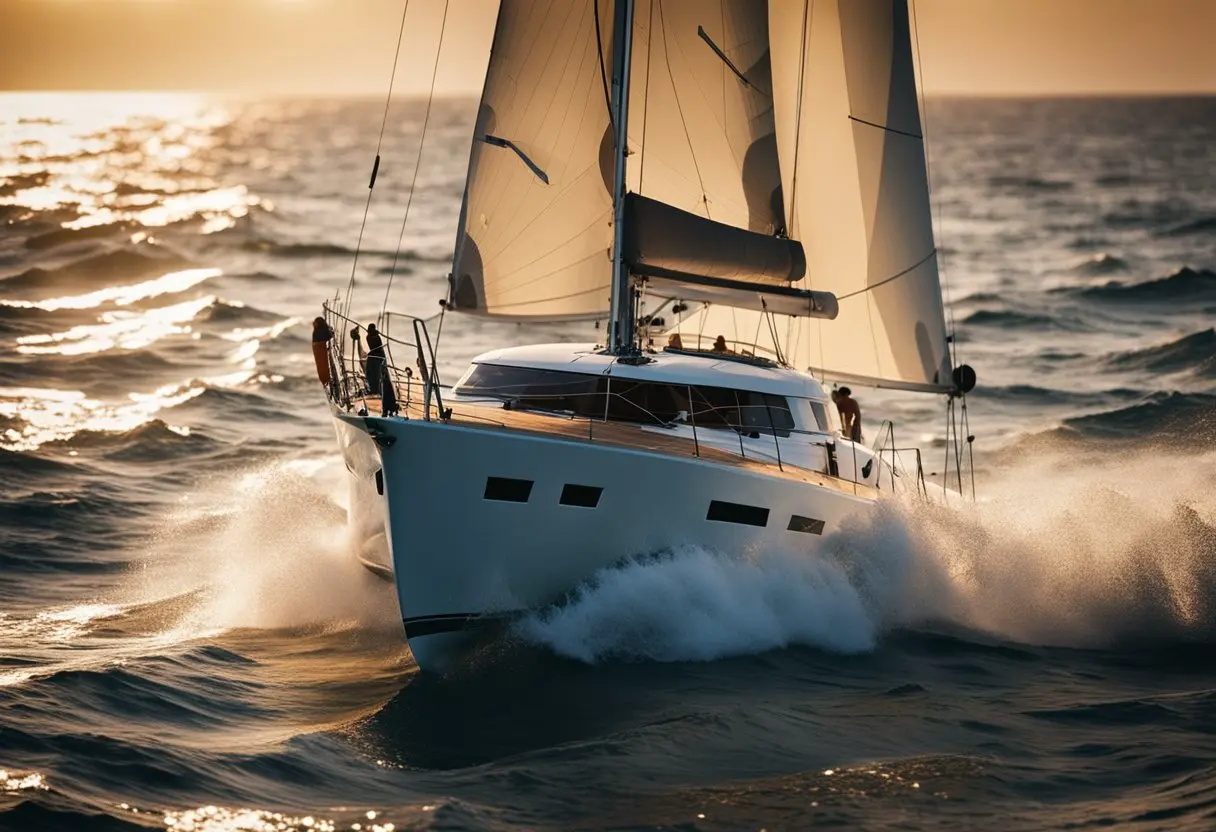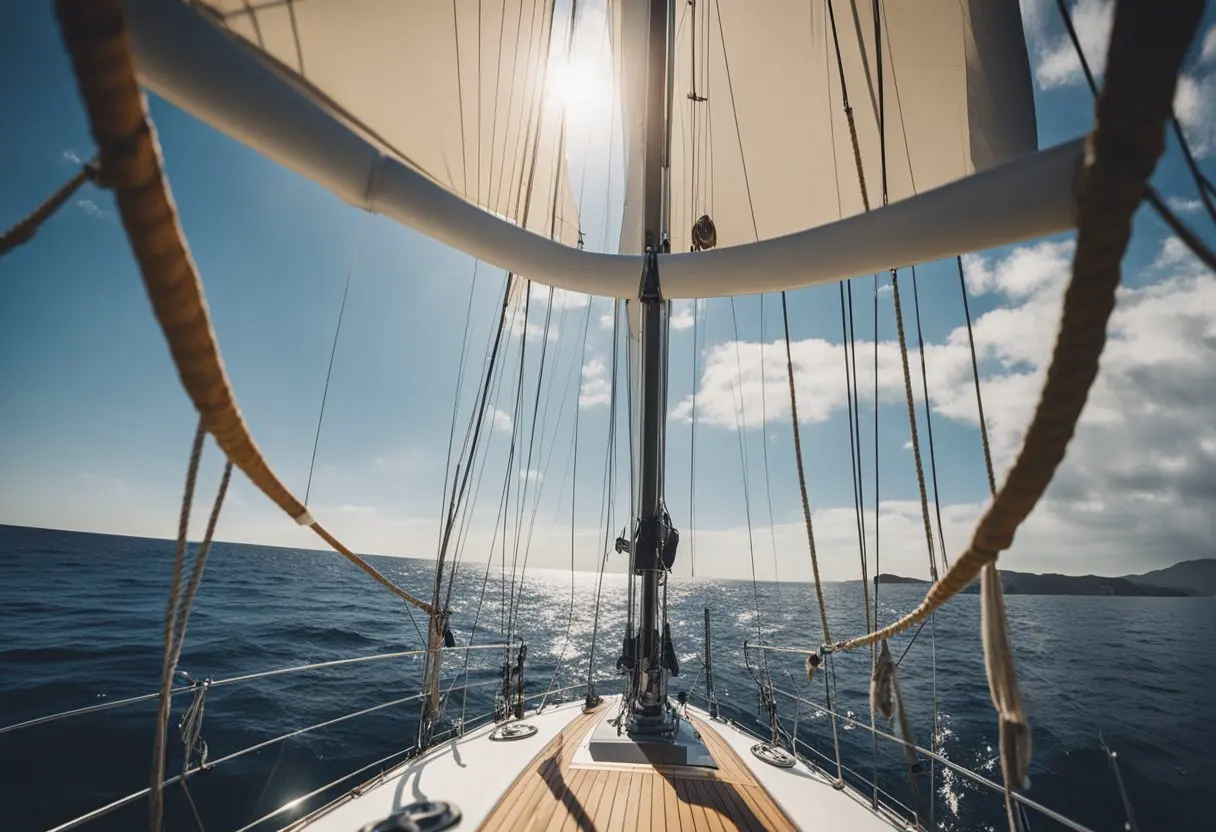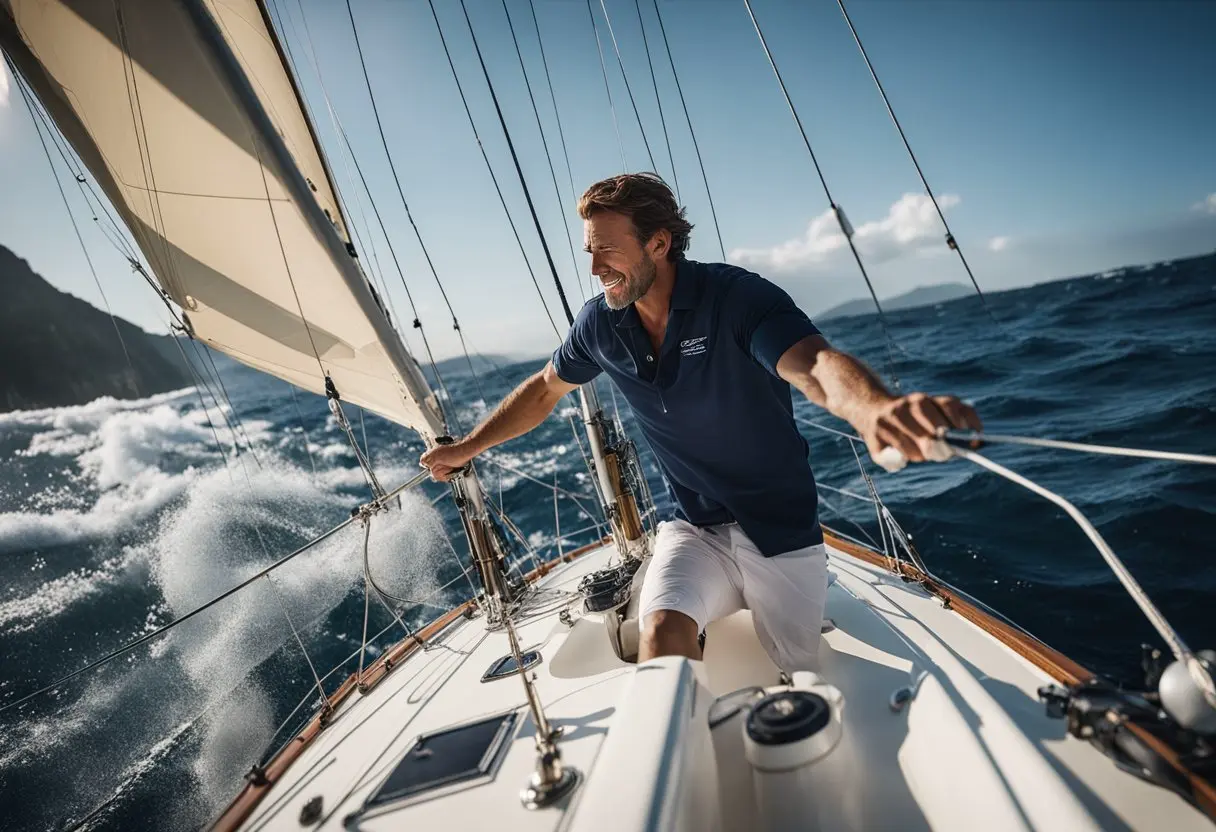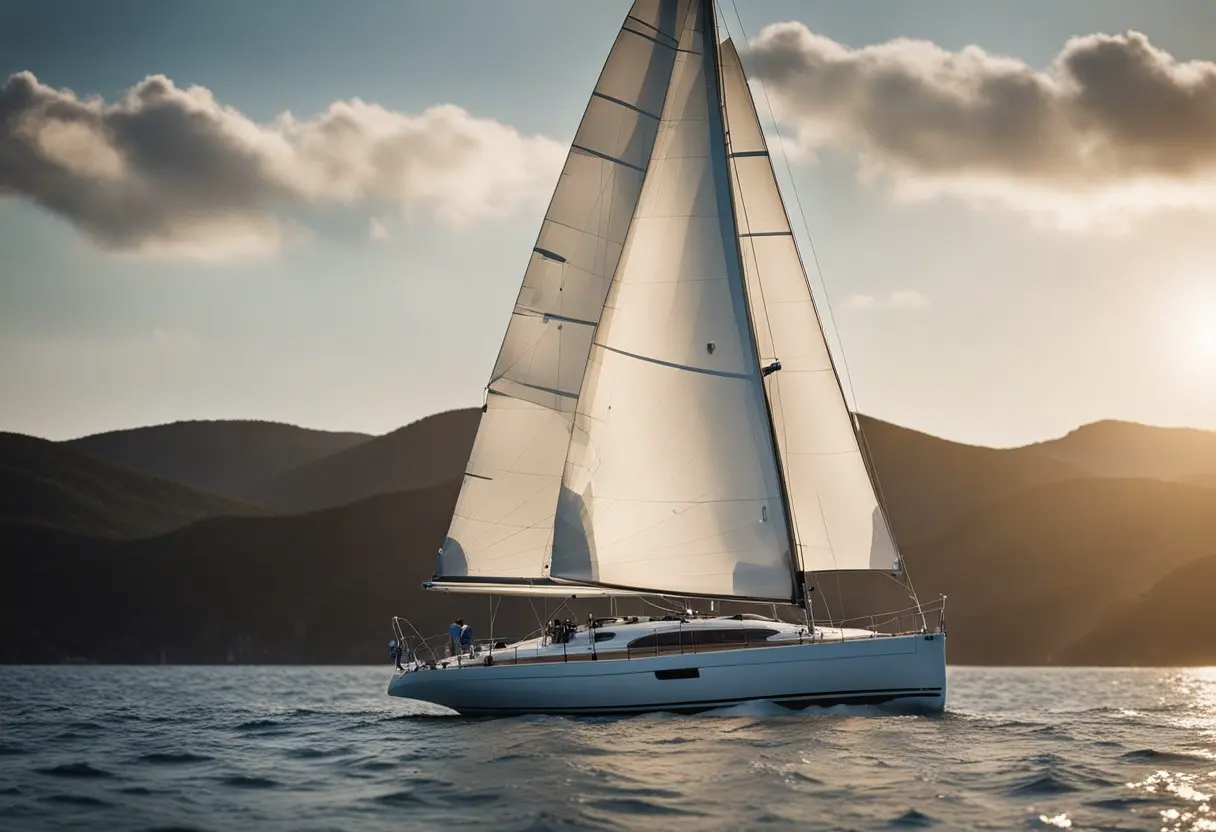Sailing Yacht Solo Voyaging: Sailing solo is a challenging and rewarding experience that requires a unique set of skills and knowledge. Solo voyaging on a sailing yacht is an even greater challenge, as it requires the skipper to handle all aspects of sailing, navigation, and boat maintenance alone. Despite the challenges, many sailors have completed solo voyages around the world, inspiring others to follow in their wake.
Solo voyaging on a sailing yacht requires careful planning and preparation. The skipper must have a thorough knowledge of the boat and its systems, as well as the ability to handle emergencies and unexpected situations. Navigation skills are also essential, as the skipper must be able to navigate safely and accurately, even in challenging conditions. In addition, the skipper must be physically and mentally prepared for the rigors of solo sailing, which can be demanding both physically and emotionally.
Despite the challenges, solo voyaging on a sailing yacht can be an incredibly rewarding experience. It allows the skipper to test their skills and push themselves to their limits, while also experiencing the beauty and wonder of the ocean. For those who are up to the challenge, solo voyaging on a sailing yacht can be the adventure of a lifetime.
Essentials of Solo Sailing

Solo sailing can be a thrilling and rewarding experience, but it requires careful preparation and planning. Here are some essentials to keep in mind before setting off on a solo voyage:
Choosing the Right Yacht
Choosing the right yacht is essential for solo sailing. The yacht should be easy to handle and maintain and should have adequate storage space for food, water, and other supplies. A smaller yacht is generally easier to handle solo, but it should still be seaworthy and have a comfortable interior for extended voyages.
Essential Safety Gear
Safety gear is critical for solo sailing. A life jacket or personal flotation device should be worn at all times while on deck, and a harness and tether should be used to prevent falling overboard. A well-stocked first aid kit, flares, and a VHF radio are also essential safety items. It is important to regularly check and maintain all safety gear to ensure it is in good working order.
Navigation Basics
Navigation is a critical skill for solo sailing. A GPS or chart plotter can be useful for navigation, but it is important to also know how to navigate using traditional methods such as dead reckoning, celestial navigation, and using charts and compasses. It is also important to be familiar with local weather patterns and to have a plan for dealing with adverse weather conditions.
Solo sailing can be a challenging and rewarding experience, but it requires careful planning and preparation. By choosing the right yacht, having essential safety gear, and mastering navigation basics, solo sailors can enjoy a safe and enjoyable voyage.
Preparation for the Solo Voyage

Physical and Mental Fitness
Before embarking on a solo voyage, it is important to ensure that the sailor is physically and mentally fit. Sailing solo can be physically demanding, and the sailor should be able to handle the physical stress of being on the boat for long periods. Therefore, it is recommended that the sailor engage in regular exercise and maintain a healthy diet to stay in shape.
Mental fitness is equally important as physical fitness. The sailor should be able to handle the psychological stress of being alone at sea for extended periods. It is advisable to practice mindfulness and other relaxation techniques to help cope with the isolation and stress of being at sea.
Provisioning and Supplies
Proper provisioning and supplies are essential for a successful solo voyage. The sailor should ensure that the boat is well-stocked with food, water, and other necessary supplies. It is recommended that the sailor plan for at least one extra week of provisions in case of unforeseen circumstances.
The sailor should also ensure that the boat is equipped with the necessary safety equipment, such as life jackets, flares, and a first aid kit. It is important to check all safety equipment before setting sail to ensure that it is in good working order.
Route Planning
Route planning is a crucial aspect of a solo voyage. The sailor should plan the route carefully, taking into consideration the weather, currents, and other factors that may affect the voyage. It is advisable to use multiple sources of weather information to ensure that the sailor has the most accurate and up-to-date information.
The sailor should also plan for alternative routes in case of unexpected weather conditions or other unforeseen circumstances. It is important to have a contingency plan in case the original plan needs to be altered.
In summary, proper preparation is key to a successful solo voyage. The sailor should ensure that they are physically and mentally fit, the boat is well-stocked with provisions and supplies, and the route is carefully planned with contingencies in mind.
Sailing Techniques for Solo Sailors

Solo sailing requires a unique set of skills and techniques. The following subsections will cover some of the most important techniques for sailing solo.
Autopilot Usage
Autopilots are essential for solo sailors as they allow the boat to steer itself while the sailor attends to other tasks. It is important to familiarize oneself with the autopilot’s settings and operation before setting sail. It is also important to monitor the autopilot’s performance regularly to ensure it is functioning correctly.
Sail Handling and Reefing
Sail handling is an essential skill for solo sailors. It is important to be able to handle sails easily and efficiently to avoid getting caught in a tough situation. Reefing is also an important technique for solo sailors as it allows the sailor to reduce sail area quickly and easily in high winds. It is recommended that solo sailors practice reefing in a variety of conditions to ensure they can do it quickly and efficiently when needed.
Energy Management
Energy management is crucial for solo sailors as they must rely on their boat’s electrical system for power. It is important to have a reliable charging system, such as solar panels or a wind generator, to keep the batteries charged. It is also important to conserve energy by turning off unnecessary electrical systems and using energy-efficient lighting.
In conclusion, solo sailing requires a unique set of skills and techniques. Autopilot usage, sail handling and reefing, and energy management are just a few of the important techniques that solo sailors should master to ensure a safe and successful voyage.
Emergency Scenarios

Solo voyaging on a sailing yacht can be a thrilling experience, but it can also be dangerous if the sailor is not prepared for emergency scenarios. Below are some of the most common emergency scenarios that sailors may face while solo voyaging and how to handle them.
Man Overboard Procedures
Man overboard is one of the most serious emergencies that can occur while sailing. The first thing to do is to shout “Man Overboard!” and throw a lifebuoy or any floating object toward the person in the water. Then, the sailor should turn the boat around and head towards the person in the water. It is important to keep the person in sight at all times and to keep the boat under control. Once the person is within reach, the sailor should use a boat hook or any other long object to help them back on board.
Storm Handling
Storms can be unpredictable and dangerous, and sailors need to know how to handle them. The first thing to do is to reduce the sail to a level that the boat can handle. The sailor should then steer the boat into the wind and waves and try to maintain a steady course. If the boat is taking on water, the sailor should use the bilge pump to remove the water. It is important to stay calm and focused during a storm and to avoid making any sudden movements that could capsize the boat.
Equipment Failure
Equipment failure can occur at any time and sailors need to be prepared. The sailor should have a basic understanding of the boat’s systems and be able to troubleshoot any problems that may arise. It is also important to have spare parts and tools on board in case of emergency. If the problem cannot be fixed, the sailor should have a backup plan in place, such as calling for assistance or using an alternative method of propulsion.
In conclusion, solo voyaging on a sailing yacht can be a rewarding experience, but sailors need to be prepared for emergency scenarios. Knowing how to handle man overboard procedures, storm handling, and equipment failure can make all the difference in a dangerous situation.
Communication and Connectivity When Sailing Solo
When sailing solo, communication and connectivity are crucial for safety and convenience. There are several tools and services available to help solo sailors stay connected with the world and receive weather updates.
Satellite Communication Systems
Satellite communication systems are essential for solo sailors who venture far from shore. These systems use satellite technology to provide voice and data communication from anywhere in the world. They are reliable and can be used to communicate with other vessels, as well as with emergency services in case of an accident.
One popular satellite communication system is the Iridium GO!, which provides voice and data communication, as well as GPS tracking and weather updates. It is compact and easy to use, making it an ideal choice for solo sailors.
Weather Forecasting Services
Weather forecasting services are essential for solo sailors, as they provide up-to-date weather information that can help them plan their routes and avoid dangerous weather conditions. There are several weather forecasting services available, both free and paid.
One popular weather forecasting service is PredictWind, which provides detailed weather forecasts, as well as wind and wave maps. It is available as a mobile app and can be accessed from anywhere in the world.
Emergency Signaling Devices
Emergency signaling devices are essential for solo sailors, as they can be used to alert emergency services in case of an accident. There are several emergency signaling devices available, including EPIRBs (Emergency Position Indicating Radio Beacons) and PLBs (Personal Locator Beacons).
EPIRBs are designed to float in the water and automatically emit a distress signal when submerged. They are registered to a specific vessel and can be tracked by emergency services. PLBs, on the other hand, are smaller and designed to be carried on the person. They can be activated manually and emit a distress signal that can be tracked by emergency services.
In conclusion, communication and connectivity are essential for solo sailors, and there are several tools and services available to help them stay connected and safe. By using satellite communication systems, weather forecasting services, and emergency signaling devices, solo sailors can enjoy their voyages with peace of mind.
Maintenance and Upkeep

Solo voyaging on a sailing yacht requires a high level of self-sufficiency, and part of that involves being able to maintain and care for your yacht. Proper maintenance and upkeep are essential to ensure a safe and enjoyable voyage. Here are some tips for maintaining and caring for your yacht while on a solo voyage.
Routine Yacht Maintenance
Routine maintenance is necessary to keep your yacht in good condition. This includes checking the rigging, sails, and other equipment regularly. It’s important to keep the yacht clean and dry to prevent rust and corrosion. In addition, regular engine maintenance is essential to ensure reliable operation. Keeping a logbook of maintenance tasks can help you stay organized and ensure that nothing gets overlooked.
Troubleshooting Common Issues
Even with proper maintenance, problems can arise while on a solo voyage. It’s important to be prepared for common issues such as leaks, electrical problems, and engine trouble. Bringing along spare parts and tools can help you make repairs while at sea. It’s also a good idea to have a basic understanding of how the yacht’s systems work so that you can troubleshoot issues as they arise.
Long-Term Yacht Care
Long-term care involves taking steps to ensure that your yacht remains in good condition over the years. This includes regular inspections to check for any signs of wear and tear, as well as preventative maintenance to address potential issues before they become major problems. It’s also important to store the yacht properly when not in use to prevent damage from the elements.
By following these tips for maintenance and upkeep, solo voyagers can ensure that their sailing yacht remains in good condition and is ready for the next adventure.
Anchoring and Mooring
When sailing solo, one of the most important skills to master is anchoring and mooring. It’s crucial to know how to anchor and moor your vessel safely and securely to avoid any potential dangers. Here are some techniques to keep in mind:
Anchoring Techniques
Anchoring is the process of securing your boat to the bottom of a body of water using an anchor. When anchoring solo, it’s important to ensure that you have the right equipment and that you know how to use it. Here are some anchoring techniques to keep in mind:
- Choose an appropriate anchoring spot: Look for an area with good holding ground, away from any potential hazards such as rocks, reefs, or other boats.
- Prepare the anchor: Attach the anchor to the anchor rod (the line or chain connecting the anchor to your boat) and make sure it’s securely fastened.
- Approach the anchoring spot: Slowly motor upwind or up-current of your chosen anchoring spot, allowing your boat to drift back as you prepare to drop the anchor.
- Drop the anchor: Once you’re in the right position, lower the anchor to the bottom. Pay out enough to ensure that the anchor is securely set.
- Check the anchor: Once the anchor is set, check that it’s holding securely by backing down on it with the engine in reverse.
Mooring Solo
Mooring is the process of securing your boat to a fixed point such as a buoy or dock. When mooring solo, it’s important to be able to approach the mooring and secure your boat without any assistance. Here are some tips for mooring solo:
- Choose an appropriate mooring: Look for a mooring that’s suitable for your boat’s size and weight, and that’s located in a sheltered area away from any potential hazards.
- Approach the mooring: Approach the mooring slowly and carefully, using fenders to protect your boat from any potential damage.
- Secure your boat: Once you’re in position, use a boat hook to pick up the mooring line and secure it to your boat’s cleat. Make sure the line is securely fastened and that your boat is not drifting away from the mooring.
By following these techniques, you can safely and securely anchor and moor your boat when sailing solo.
Customs and Immigration
When it comes to solo voyaging on a sailing yacht, clearing customs and immigration can be a daunting task. However, with proper preparation and knowledge of the process, it can be a smooth and efficient experience.
Clearing Customs Alone
Clearing customs alone as a solo sailor requires careful planning and attention to detail. Before arriving at a port of entry, it is essential to research the specific requirements of the country you are visiting. This includes knowing which documents are required, such as a ship’s registration, crew list, and passports, as well as any fees that may need to be paid.
Upon arrival, it is important to follow the correct procedures for reporting and clearing customs. This may involve contacting customs officials via radio, anchoring at a specific location, or physically visiting the customs office. It is crucial to remain patient and respectful throughout the process, as customs officials may have different procedures and requirements than what you are used to.
Visa Requirements
Visa requirements for solo sailors vary depending on the country being visited and the nationality of the sailor. It is important to research visa requirements well in advance of the voyage and apply for any necessary visas promptly. Some countries may require a visa application to be submitted in person, so it is important to plan accordingly.
Additionally, some countries may have restrictions on the length of stay for visitors, so it is important to be aware of these limitations and plan the voyage accordingly. Overstaying a visa can result in fines, deportation, or even criminal charges, so it is crucial to remain aware of visa requirements throughout the voyage.
In conclusion, clearing customs and immigration as a solo sailor requires careful planning and attention to detail. By researching the specific requirements of each country, following proper procedures, and remaining respectful throughout the process, solo sailors can ensure a smooth and efficient experience.
Solo Voyaging Experiences
Solo voyaging can be a life-changing experience, and many sailors have shared their personal stories of adventure and self-discovery. One such sailor is Jeanne Socrates, who at the age of 77 became the oldest person to sail solo around the world nonstop. Her journey was not without challenges, including a collision with a fishing boat and a broken mainsail, but she persevered and completed her voyage in just over 320 days.
Another sailor with a remarkable story is Robin Lee Graham, who at the age of 16 set out to sail solo around the world in his 24-foot sloop, Dove. His journey lasted five years and took him through the Panama Canal, across the Pacific and Indian Oceans, and around the southern tip of Africa. Along the way, he met his future wife and wrote a book about his adventures, which later became a movie.
Challenges and Rewards
Solo voyaging can be a daunting undertaking, and there are many challenges to overcome. One of the biggest challenges is the isolation and loneliness that comes with being at sea for extended periods. This can be especially difficult for those who are used to being surrounded by people and noise.
However, there are also many rewards to solo voyaging, including the sense of freedom and self-reliance that comes with being alone on the open ocean. Solo sailors must rely on their skills and instincts to navigate, make repairs, and handle emergencies, which can be both empowering and fulfilling.
Another reward of solo voyaging is the opportunity to connect with nature profoundly. Solo sailors often report feeling a deep sense of connection to the natural world, and some even describe spiritual experiences while at sea.
In conclusion, solo voyaging is not for everyone, but for those who are up to the challenge, it can be a life-changing experience full of personal growth, adventure, and rewards.
FAQs About Sailing Yacht Solo Voyaging
What size sailboat is optimal for single-handed voyaging?
The optimal size of a sailboat for single-handed voyaging depends on the sailor’s experience and skill level. Generally, sailors recommend a boat between 30 to 40 feet in length as it is easier to handle alone. Boats larger than 40 feet may require more physical strength and expertise to handle alone. However, some solo sailors have successfully circumnavigated the globe on boats as small as 20 feet.
How do sailors manage to sleep while undertaking solo sailing expeditions?
Solo sailors must manage their sleep schedules carefully to ensure they are well-rested and alert while on watch. Many sailors use a technique called “catnapping,” where they sleep for short periods of 20-30 minutes at a time. They also use alarms and timers to wake them up when it’s time to check the boat. Some sailors also use technology such as radar and AIS to alert them to any approaching vessels.
What are the legal considerations for a solo skipper regarding sleep during watch?
The International Regulations for Preventing Collisions at Sea (COLREGS) require a vessel to maintain a proper lookout at all times. A solo skipper must ensure they are well-rested and alert while on watch to maintain a proper lookout. However, there are no specific legal requirements for solo sailors regarding sleep during watch.
Who holds the record for the fastest solo sailing circumnavigation?
The current record for the fastest solo sailing circumnavigation is held by French sailor François Gabart. He completed the voyage in 42 days, 16 hours, 40 minutes, and 35 seconds in 2017.
Can an individual sail around the world alone without any crew?
Yes, an individual can sail around the world alone without any crew. This is known as a solo circumnavigation. However, it requires extensive planning, preparation, and experience. Solo sailors must be able to handle all aspects of the voyage, including navigation, sail handling, and repairs.
What are the typical routes for solo circumnavigation?
There are several routes for solo circumnavigation, including the classic route via the Panama Canal, the Cape of Good Hope, and the Cape Horn. Some sailors also chose to sail through the Red Sea and the Suez Canal. The route chosen depends on the sailor’s preference, experience, and the boat’s capabilities.
